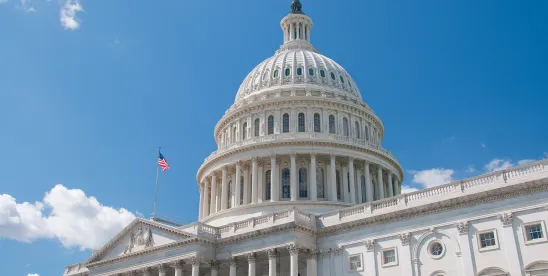On March 27, 2025, the United States Department of Health and Human Services (HHS) announced a “dramatic restructuring” that will result in a reduction in agency workforce combined with significant internal restructuring.1 The department plans to cut approximately 20,000 positions, bringing its headcount in line with HHS’s pre-2002 level of around 62,000 employees. The anticipated restructuring involves consolidating 28 divisions into 15, citing prior budget and staffing increases of 38 percent and 17 percent, respectively.2
In connection with this restructuring, the Administration announced the following changes:
- Creation of the Administration for a Healthy America (AHA), which will consolidate the Office of the Assistant Secretary for Health (OASH), the Health Resources and Services Administration (HRSA), the Substance Abuse and Mental Health Services Administration (SAMHSA), the Agency for Toxic Substances and Disease Registry (ATSDR) and the National Institute for Occupational Safety and Health (NIOSH);
- Transfer of the Administration for Strategic Preparedness and Response (ASPR) to the Centers for Disease Control (CDC);
- Creation of a new Assistant Secretary for Enforcement to oversee the Departmental Appeals Board (DAB), Office of Medicare Hearings and Appeals (OMHA) and Office for Civil Rights (OCR);
- Merging the Assistant Secretary for Planning and Evaluation (ASPE) with the Agency for Healthcare Research and Quality (AHRQ) to create a new Office of Strategy to provide research enhancing HHS’s various initiatives;
- Reorganizing the Administration for Community Living (ACL) programs that support older adults and people of all ages with disabilities into other parts of HHS; and
- 10 HHS Regional Offices will be consolidated into 5.3
These cuts and restructurings follow the February 11, 2025, Executive Order which placed much of the federal government’s human resource management under the purview of the Department of Government Efficiency (DOGE)4 and the February 12, 2025 termination of “Fork in the Road,” a deferred resignation program for government employees.5 This latest announcement adds to the growing number of federal staff reductions—62,000 jobs were cut across 17 different agencies in February alone.6 With HHS’s designation of a new Assistant Secretary of Enforcement to combat purported fraud, waste and abuse across its divisions, more job cuts could be on the horizon.
As a result of this latest announcement, the anticipated amount of job cuts and resulting reduced employee pools are as follows: the U.S. Food and Drug Administration (FDA) will cut 3,500 employees (about 20 percent of its workforce); the Centers for Disease Control and Prevention (CDC) will cut 2,400 employees; the Centers for Medicare and Medicaid Services (CMS) will cut 300 employees; and the National Institutes of Health (NIH) will cut 1,200 employees. These cuts, along with another 2,600 employees slated for dismissal, amount to a total of 10,000 HHS jobs cut. These cuts, combined with another 10,000 employees who have left the agency due to buyouts or other voluntary resignations, add up to the 20,000 total employee reduction.7
Potential Impacts
The sweeping job cuts, department re-organization and consolidation are in line with Secretary Kennedy’s vision of “doing more with less” resources, while a former HHS employee anonymously expressed concerns that “the cuts will weigh heavily on caseworkers and account management teams,” ultimately leading to a declination in “[s]ervice standards for Medicare Advantage beneficiaries,” due to both “a reduction in the people that handle their cases” and “diminished oversight of the Medicare Advantage plans.”8
Healthcare providers and other organizations that rely on regular interaction with HHS and its subagencies should be on the lookout for disruptions or delays in service as HHS implements these cuts and departmental reorganizations. For example, several senior FDA drug reviewers have already announced their resignations, and more are expected, raising the distinct possibility that the FDA’s ability to perform its public health functions will be impaired.9 The full impact of the March 27th announcements will not be known for some time, but potentially impacted stakeholders should keep a watchful eye over the coming months as HHS implements the announced changes.
[1] U.S. Dep’t of Health and Human Servs., HHS Announces Transformation to Make America Healthy Again (Mar. 27, 2025), https://www.hhs.gov/about/news/hhs-restructuring-doge.html.
[2] U.S. Dep’t of Health and Human Servs., Fact Sheet: HHS’ Transformation to Make America Healthy Again (Mar. 27, 2025), https://www.hhs.gov/about/news/hhs-restructuring-doge-fact-sheet.html.
[3] Id.
[4] Exec. Order No. 14,210, 90 Fed. Reg. 9669 (Feb. 14, 2025); see also Exec. Off. of the President, Implementing The President’s “Department of Government Efficiency” Workforce Optimization Initiative (Feb. 11, 2025), https://www.whitehouse.gov/presidential-actions/2025/02/implementing-the-presidents-department-of-government-efficiency-workforce-optimization-initiative/.
[5] U.S. Off. of Pers. Mgmt., Fork in the Road: Program Closed, https://www.opm.gov/fork/ (last visited Mar. 27, 2025).
[6] Janet Nguyen, Federal workers’ salaries represent less than 5% of federal spending and 1% of GDP, Marketplace (Mar. 6, 2025), https://www.marketplace.org/2025/03/06/federal-workers-salaries-represent-less-than-5-of-federal-spending-and-1-of-gdp/.
[7] Phil Taylor, HHS plans 10,000 more job cuts, taking target to 20,000, pharmaphorum (Mar. 27, 2025), https://pharmaphorum.com/news/hhs-plans-10000-more-job-cuts-taking-target-20000.
[8] Meg Tirrell et al., HHS cuts 10,000 employees in major overhaul of health agencies, CNN (Mar. 27, 2025, 6:46 PM), https://www.cnn.com/2025/03/27/health/hhs-rfk-job-cuts/index.html.
[9] See @steveusdin1, X (Mar. 27, 2025, 4:54 PM), https://x.com/steveusdin1/status/1905377827836624915.







 />i
/>i

